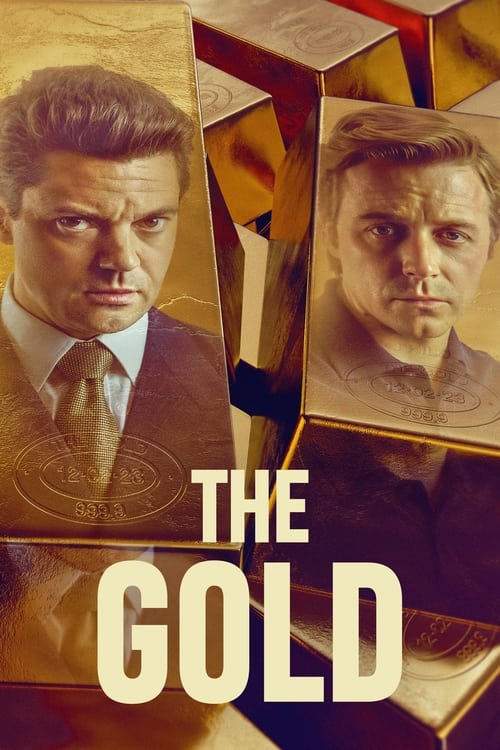Pay TV Australia: Plans, services and latest offers

Pay TV Australia – what’s changed? Around the world, pay TV has been a key part of regular TV viewing for over half a century. Here in Australia, however, we only had free-to-air TV to entertain us for nearly 40 years from the arrival of television in 1956.
With no competition, the free-to-air networks enjoyed total dominance over entertainment and sports TV programming, meaning we had to watch TV on their terms. Yet today, over 30 per cent of Australians subscribe to pay TV in its traditional form.
The current landscape for pay TV in Australia is now far more diverse than it used to be. We have streaming TV services like Netflix, Stan, Amazon Prime Video, Kayo Sports, BeIN Sports, along with set-top boxes like Apple TV, and so many other streaming services.
What’s in this guide
The best Pay TV Australia streaming service
For many years there were only Foxtel and Fetch TV. Now with the boom in demand for streaming services, there is so much competition in Australia and cable TV is almost dead in its traditional form. They have now largely switched to subscription television services and offer catch-up TV services on their streaming platform.
Streaming services and pay TV providers are fighting in a very competitive market for every customer – meaning they must provide a high-quality service at an affordable price. So, the question becomes who to choose when there is so much choice? Who’s got the best deal out there?
Well, worry not, you are in the right place. We’ve checked it all for you! Check out our comparison page and grab a pay TV for yourself!
Search our Free To Air TV Guide
Pay TV Australia – The way it used to be
While pay TV is a bit of a catch-all term that is sometimes used to describe any form of pay TV service that isn’t purely free to air TV, in Australia the term has historically referred to the various cable and satellite TV services that have appeared since 1995.
They provide access to a group of premium television channels to watch live TV shows on – a novel concept to Australians when it first started, but one that’s completely normal these days.
You generally subscribe to pay TV services by paying a monthly subscription fee. This gives you access to a core set of premium pay TV channels. With most services, such as Foxtel and Kayo, you then add extra groups of channels depending on your interests (sports, movies, lifestyle, drama, documentaries, and so on).
Your pay TV subscription is delivered via a network of fibre and analogue cables often laid underground (very similar to the Fibre to the Node networks rolled out by broadband providers), via an internet connection. Rather than broadband providers, most commonly used is a transmission from a dedicated TV satellite to a dish on your home.
In Australia, that cable is being taken over entirely for internet providers’ use as part of the NBN, with all cable Foxtel users expected to move to satellite or Aussie broadband delivery over the next few years.
Best internet streaming plan
Pay TV to streaming service
These days, we use the term pay TV to describe any TV service that people are willing to pay a subscription or one-off fee for. This includes the biggest shakeup to the pay TV industry in decades – the streaming service boom.
These streaming platforms – like Netflix, YouTube Premium, and Stan – get their movies and TV shows live and on-demand via your internet connection through internet service providers, rather than the satellite dish or cable used by traditional pay TV.
As a result, the current landscape for pay TV in Australia is now far more diverse than it used to be. Here you have a list of pay TV providers and streaming services in Australia.
Neflix

Who doesn’t know Netflix? An American streaming TV giant who got even bigger during the Covid-19 pandemic. People were stuck at home with nothing better to do other than watching TV series and eating snacks. Netflix offers three streaming plans and another cheaper one but with ads, each made distinct by their video streaming quality and the number of devices allowed for simultaneous streaming.
Min. cost – $6.99 per month (with ads)
Stan

Launched in 2015, Stan is an over-the-top streaming TV founded as a joint venture by Fairfax Media and Nine Entertainment. Since then they became one of the biggest players in the Australian market with over 2.3 million subscribers. Their original comedy “No Activity” became the first SVOD nominated for a Logie Award (2016). Stan also offers a 30-day free trial for new customers.
Min. cost – $10 per month
Amazon Prime Video

Amazon Prime is an over-the-top streaming and rental service provided by Jeff Bezos’ Amazon.com Inc. For a relatively low price you get an access to a lot of movies, TV series, and productions called Amazon Originals. There’s only one streaming plan that already allows simultaneous streaming on up to 3 devices. Plus, a free 30-day trial for new customers.
Min. cost – $9.99 per month
Foxtel

Foxtel was the name for TV for decades in Australia. The foundation of NBN and the arrival of Streaming TV has tipped the scales a little bit, but instead of dying like an old empire, Foxtel adjusted and grew even stronger. Foxtel often offers streaming deals that’ll get you monthly savings for a year.
Min. Cost – $52 per month
Foxtel Now

Foxtel Now is Foxtel’s response to the popularity of Streaming TVs. For a low price you can have access to great entertainment – TV Shows, Live Sport, Movies, and News. Foxtel Now can be a part of a Foxtel bundle, so double-check if there is a great deal to be made.
Min. cost – $25 per month
BeIN Sports Connect

Now a standalone streaming service, BeIN Sports is an excellent option for those interested in the European nations, with games from the Bundesliga, Serie A, Ligue 1, all available through the service.
In terms of English football, you can watch the Carabao Cup, a domestic tournament, and the EFL football league games, including the second tier of English football – the Championship.
Min. cost – $14.99 per month
Kayo Sports

Kayo is Australia’s sports-dedicated streaming service, providing over 50 sports live and on demand. Owned by Foxtel’s Streamotion, the platform is all about housing dozens of sporting events in one place. The service does not only offer unrivalled sports content (which also includes documentaries), it has streaming features that’ll make watching sports way easier and more fun than it already is. Since its launch in 2018, Kayo Sports has amassed over 1 million subscribers.
Min. cost – $25 per month
DAZN

For boxing fans, DAZN offers an appealing choice. Its global rollout included Australia, which means access to premier international championship fights for $13.99 per month. While Kayo offers a variety of sports, DAZN is all about bringing boxing matches to your screens for a very affordable price. And despite offering only a single sport, it works.
Min. cost – $13.99 per month
BINGE

BINGE also comes from Streamotion just like Kayo Sports, though the former is a streaming TV service that includes all HBO and BBC exclusives, as well as other shows from the world’s biggest names in entertainment. Simply put, whatever trending or critically acclaimed show there is, you can most likely find it on BINGE. The platform also has nifty streaming features for enhancing your experience. New customers can try it for 7 days free.
Min. cost – $10 per month (with ads)
Disney Plus

Disney’s very own streaming service initially launched as a platform that offers mostly family and kids TV shows and movies. The addition of Star has since changed that, significantly diversifying the service’s library of content that adult audiences will find more appealing. Disney also launched Disney Premier so movie fans can instantly watch Disney’s latest theatrical releases without needing to wait for months before they’re added to the Disney Plus catalogue. Disney Plus currently doesn’t offer a free trial, but offers exciting Disney plus deals every now and then.
Min. cost – $13.99 per month or $139.99 per year
Hayu

For all things reality TV, hayu is your go-to streaming platform. It has all the classic lifestyle and reality shows and in complete seasons too. hayu is also the place where you can stream new episodes of your favourite reality series, whatever it is, since hayu will most likely have it. New customers who want to test drive the service can enjoy total access with a 7-day free trial.
Min. cost – $6.99 per month
Fetch TV

Fetch TV is a mix of free-to-air, catch-up channels, streaming services, and movies all in one place. It can be purchased as a standalone set-top box or as part of a broadband plan which providers like iPrimus offers. Through bundles, there can also be Fetch offers like free access to one channel pack for a month. There are three to choose from: Fetch Mini, Fetch Mini 4K, and Fetch Mighty. Premium channel packs can be added from $6 per month or $20 per month if you get all of them.
Optus Sport

An Optus Sport subscription gives users access to Premier League, FA Barclays Women’s Super League, UEFA Women’s Euro 2022 and the 2023 FIFA Women’s World Cup, live and on demand. On the Optus Sport app, you can also use the OS Fitness for streaming fitness workouts. While it no longer offers a free trial, Optus offers free subscription as part of select broadband or mobile plans.
Min. cost – $24.99 per month
Apple TV+

Apple TV+ only offers Apple originals, which initially were scarce but its catalogue of shows and movies has since increased since the service’s launch. Most shows produced for the streaming app are also of high-caliber in both quality and production values, which includes top favourites The Morning Show, Ted Lasso, See, and Physical. Signing up includes a 7-day free trial or 3 months of free Apple TV+ access when you purchase an eligible Apple device.
Min. cost – $9.99 per month
Paramount+

In Australia, Paramount Plus is the rebranded version of 10 All Access. Unlike its predecessor, Paramount Plus has a very wide variety of shows, movies, documentaries, and even sports to offer. It combines content from CBS, Showtime, Nickelodeon, MTV, Australia’s Network Ten, and more. New customers also get a 7-day free trial.
Min. cost – $9.99 per month
Youtube Premium

YouTube Premium offers exactly what it’s called – premium YouTube access. This means ad-free music and video streaming, background play, and downloads, along with dozens of YouTube originals. There’s no lock-in contract so you can cancel anytime, plus one month free trial.
Min. cost – $14.99 per month
How to choose the best Pay TV Australia service?
Meja used to sing: “It’s all ’bout the money”. This fundamental truth will never get old. However, with the current level of competition in the modern world, demand is being driven by more than just cost. This is especially true in the world of internet TV and all the streaming services in Australia!
Sometimes it’s a matter of paying a little more for what you really want out from a service.
The price
This is not to say that price is not a factor – the price is always a factor. Unless you belong to the top-1 per cent, your eye will always be drawn to the “$” sign next to a product or service.
The number of channels
The more the better, right?
It is usually the second thing we look at when hesitating between a couple of pay TV providers. Which has the most channels?
In most cases, you need to pay more for more channels. But let’s be honest, it’s usually worth it.
The channels you care about
Let’s say you are a huge sports fan – the biggest out there. You watch any sport anytime you can, wherever you can, whatever it is. Are the Ecuador U19s playing tonight? Count you in. That big.
The choice is obvious. Choose the pay TV with the best offer of sports streaming channels.
But what happens when your partner wants to watch some culinary shows like the Masterchef? Or when you love cooking and reality TV just as much as you love sport? This is when life gets difficult.
And with so much choice out there, you don’t want to sign up for pay TV in some lock-in contract just for this one channel. But if you find another offer with better access to the channel you need, the choice will become much more simple.
The stability
You can’t look only at the pay TV itself but at your NBN provider too.
Is it up to the challenge? Is your old NBN25 fit for the specific pay TV you want? What is going to happen if multiple people try to connect at the same time?
Let’s say you want to watch Star Wars on VOD in the evening, in HD quality, of course, and your kids have homework to complete (copy-paste) from the Internet.
Or you, your partner, your kids, and the in-laws want to watch films on simultaneous streams on up to four screens one evening. Will it manage?
You may consider improvements in terms of NBN first before choosing a pay TV for your household.
Usually, any pay TV or streaming TV provider will tempt you with the best NBN provider for their TV. Is it true? Does the particular NBN work better with their signal? Not really.
However, the thing you should look at is the deal itself. If your pay TV provider offers you an NBN Plan 15% cheaper than it would normally cost, take it. Or at least consider it.
Free to air moves into streaming services
As pay TV services have evolved past the traditional format of cable, streaming TV services have grown to be the most popular way to watch TV.
As a result, even the free-to-air networks have moved into the streaming service space to make their content more easily accessible via on-demand streaming service platforms.
All five networks operate their own free streaming services that each deliver live TV and streaming of the latest movies and TV shows that are shown on their cable network (no more need to record live TV).
Those major TV providers each have their own streaming service apps, loaded with the latest releases as well as old favourites, all for free. In many cases, movies and TV shows are available on these apps that haven’t even been seen on free-to-air TV, let alone services like Apple TV, and other streaming services.
Traditional Pay TV vs Streaming Services
The main reason people get pay TV is to watch their favourite TV shows and movies, but when streaming services can also offer high quality TV shows and movies streaming on demand, is there much room for the traditional form of pay TV?
There are many exclusive streaming service originals made by Netflix, Stan, Amazon Prime Video, Apple TV+, and others – even YouTube Premium now – often made with a huge production budget. Pay TV providers offer these too, but tend to focus on a wide variety of entertainment rather than original content.
You can get a pay TV streaming subscription with only an internet connection required. There are no set-up costs with a streaming service aside from the price of the device you’re streaming on (and most smart TVs have apps built in for the purpose).
Many services offer a free trial. This can range from a 7-day free trial, as with Apple TV+, to a 30-day free trial, as Amazon Prime Video offers.
And YouTube Premium offers a range of free trials depending when you check – sometimes you can get a three-month free trial, letting you access all the great user content, YouTube originals, and YouTube music – not to mention the background video playback feature!
What’s more, a monthly subscription price is much lower than traditional pay TV owing to the highly competitive market – and there is no lock-in contract!
So, why does traditional pay TV still exist?
Best TV shows, movies and more
As convenient as streaming video on demand may be, having instant access to your favourite TV shows and movies from anywhere you please, it can have some of the same downsides as traditional pay TV.
For example, sports fans with wide taste will require Kayo Sports (with its 14 day free trial) to start with – then, if they want premier league soccer they will want Optus Sport, for A-League soccer they’ll need Paramount+ and, if they want swimming or rugby coverage, add Amazon Prime Video and Stan.
Already, that’s five monthly subscription streaming services to cover sporting needs. Let’s say that same person also likes a huge library of exclusive shows and movies.
Then they might want Netflix, Stan, Apple TV+, Disney Plus and, if they like HBO content like Game of Thrones then there’s BINGE or Foxtel Now. We can throw in hayu for reality TV fans, or if you’re into factual content then there’s DocPlay for some of the best documentaries.
This example is just one person and the number of streaming services is almost in double digits with each costing upwards of $10 per month. With new streaming services coming online all the time and more rumoured for the future, there’s a huge collection of streaming services available, all of which, on their own, are incredibly cheap – but which add up fast.
For families, there can be an even larger range of needs when it comes to streaming services, as everyone will have their favourite types of movies, TV shows and sports.
Add to that an increased cost for your internet service thanks to all the data that video streaming uses, and suddenly you can be paying more than a traditional pay TV service for the same amount of content- if not less, thanks to the lack of live TV.
Some people just want access to a huge library of movies & TV shows, live TV, sports streaming and all the rest in the one package. This is where Foxtel wins every time. Their streaming service Foxtel Now is included with Foxtel’s pay TV packages and can be used to stream your live TV channel packs as well as video on demand for instant viewing.
Foxtel has years of experience at providing the ultimate pay TV streaming experience, and as they transition to a more streaming focused market, they will only improve.
Here is a list of what’s on streaming (shows, movies or sports) on a few key streaming services in Australia:
Latest shows and movies on streaming TV
The best streaming services on offer
While traditional pay TV options like Foxtel and Fetch TV may be best suited to families or someone with a wide range of interests, streaming services are still an incredible option for most individuals.
If you’re a regular sports viewer, or even like to casually catch up with a game, then we can’t recommend Kayo Sports, BeIN Sports and Optus Sport enough.
Both deliver premium sport live and on-demand, with Optus Sport specialising in English Premier League soccer, and Kayo Sports bringing together over 50 sports from around Australia and the world. BeIN Sports, which recently departed from its partnership with Kayo and Foxtel starting 1 July, brings sports fans access to Football, Motorsport, tennis, Rugby and more.
If you’re obsessed with TV shows and movies, services like Netflix, Stan, Amazon Prime Video, Apple TV+, or even BINGE have you covered, depending on what your favourite shows are. Some even include a 7-day free trial for new customers, others a 30-day free trial!
Streaming services work anywhere you are – at home or on the go – whenever you want to watch, as long as you have a compatible device handy and a decent internet connection.
You can watch at home with an Apple TV, Fetch TV box, smart TV or computer – or watch on the go with a smartphone, laptop or tablet.
The price remains the same regardless of how many devices you watch a streaming service on – in fact, most subscription services let you watch on multiple devices at the same time.
You can choose a subscription price tier to get access to streaming on more screens at once, as well as improving video quality. There’s something for everyone in the streaming service market, which we believe is the future of pay TV – and if you don’t believe us then check out these incredible deals.
How to watch your Pay TV Australia service
Whether you’re looking for a way to watch streaming services like Netflix and Stan, or you want to channel-surf traditional pay TV while streaming video on demand for your Game of Thrones or Outlander fix, having the right device is crucial so you can get right to watching your favourite shows and movies.
When it comes to the traditional pay TV services – Foxtel and Fetch TV – the choice of device is an easy one, since both companies make their own set top box that’s dedicated to the service you’re subscribing to – Foxtel’s iQ4, and the Fetch TV Mighty and Mini.
Both of these boxes give you access to the live channels you’re subscribed to, but also let you use a range of streaming services as well – Netflix on both, with ABC iView and SBS On Demand on the iQ4 (and the latest iQ5), as well as YouTube Premium. Fetch TV includes even more streaming apps including ones for the free to air TV providers.
For those looking to go all-in with streaming services, there’s a huge range of devices to choose from to do so. Most modern smart TVs can stream the big services, but a dedicated box can be far more versatile, and give you access to renting or buying the very latest shows and movies.
Apple TV has the famous iTunes Store. Google’s latest Chromecast has a store built in as well. Amazon Prime Video also rents shows and movies across all devices that support it.
A dedicated streaming device can also make all the difference to your enjoyment of live sports. Kayo Sports offers several unique features on devices like Apple TV (such as Split View) while Stan will be eventually streaming soccer in 4K (and we hope Amazon Prime Video follows with the swimming!)
Meanwhile, BeIN sports subscribers can access four BeIN channels where they can watch tons of football, tennis, rugby and more sports through their app, BeIN Sports Connect.
Streaming traditional Pay TV
With Foxtel Now included with every Foxtel subscription for mobile and tablet use, even if you’ve already got a set-top box at home you can watch your TV shows, movies, reality TV, docos and sports on the go at no extra cost, just by downloading and logging into the app.
Foxtel satellite and cable subscribers who want to take it to the next level with streaming, though, can add Multiroom to their package – which lets you stream Foxtel Now on devices ranging from your smart TV, to streaming boxes, bringing pay TV into extra rooms at no extra cost.
Of course, you can subscribe to Foxtel Now directly without needing any installation, and start streaming immediately on the same devices. It’s a great option for those who don’t want to get a full satellite installation, and it comes with a 10-day free trial of all channel packs so you can sample everything the service has to offer.
Fetch TV, meanwhile, offers an app for smartphones and tablets that lets you stream your channels and your recordings anywhere you are. You can also stream recordings from a Fetch Mighty to a Fetch Mini in another room of the house.
Traditional Pay TV vs Streaming Services
The main reason people get pay TV is to watch their favourite TV shows and movies, but when streaming services can also offer high quality TV shows and movies streaming on demand, is there much room for the traditional form of pay TV?
There are many exclusive streaming service originals made by Netflix, Stan, Amazon Prime Video, Apple TV+ and others, often made with a huge production budget. Pay TV providers offer these too, but tend to focus on a wide variety of entertainment.
FAQ
It is not. Streaming TV comes through the Internet, meaning that you need your Internet connection to watch it. Meanwhile, Pay TV is delivered to your house via a cable that’s pinned into a decoder, hence sometimes it is called “Cable TV”.
Free-to-air TV is unencrypted TV available for everyone who owns necessary equipment – mostly the TV and antenna.
Catch-up TV is nothing else than a traditional TV programme available online for you to catch up. Prime examples of catch-up TV available in Australia are ABC’s iView, Seven’s Plus7, and SBS On Demand.
You should never go for the cheapest option possible if you have a choice and resources. Always make your decision deliberately and base it upon research.
It depends on many factors – the region you live in, your NBN connection, and most of all the capabilities of your wallet.
































